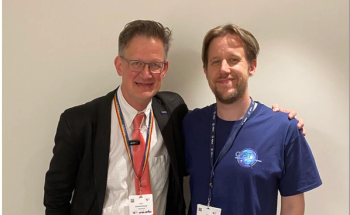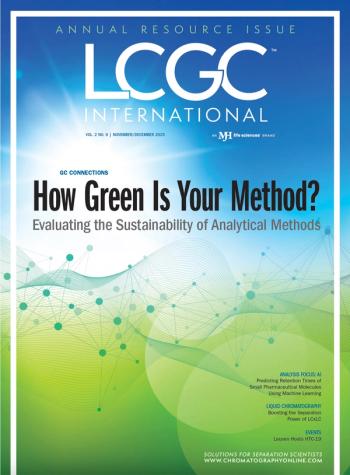
- The Column-06-11-2018
- Volume 14
- Issue 6
Investigating the Flavour Profiles of E-Cigarettes
Researchers from Gdansk University of Technology, Poland, have investigated the flavour profiles of e-cigarette refill solutions using GC–MS/MS.
Researchers from Gdansk University of Technology, Poland, have investigated the flavour profiles of e-cigarette refill solutions using gas chromatography–tandem mass spectrometry (GC–MS/MS) (1).
The massive rise of e-cigarettes has partly been fuelled by the wide variety of flavours available to smoke. One publication found that 81.5% of young interviewees use e-cigarettes “because they come in flavours I like” (2). Despite EU tobacco regulations stipulating that flavoured cigarettes are prohibited, this does not apply to e-cigarettes with over 7700 unique flavoured e-liquids being sold as of 2014 (3). The sheer quantity of additives across the liquids has led to concerns regarding their safety, with numerous studies finding adverse effects to e-cigarette use (4,5). Therefore, researchers wanted to carry out a wide-ranging chemical analysis to ascertain the unknown nature and impact of these additives on human cells, particularly the lungs (6,7). They also wanted to document and produce data on the compounds that are responsible for specific e-liquid flavours. The first step in this process was the development of a sensitive method capable of analyzing e-cigarette refills.
Using GC–MS/MS researchers evaluated the compounds responsible for five of the most popular flavours (menthol, apple, tobacco, strawberry, and cherry) from five different brands.
The developed methodology successfully quantitated 90 flavour additives and categorized the flavour chemicals for the evaluation of the taste profiles. “I believe the methods would be suitable to analyze more flavours,” said Pawel Kubica, Gdansk University of Technology. “Everything depends on the physiochemical properties of compounds and how they interact with the stationary phase and with the detector,” he continued.
Future studies are likely to follow on the subject because of the enormous variety of e-cigarette flavours, providing a wealth of interesting compounds for study. “We have finished a project to generate and collect aerosol from e-cigarettes,” said Kubica. “The main purposes of this project were to design and construct a smoking machine for e-cigarettes to obtain high recoveries of aerosol (<90%), reduce the time required for aerosol generation and collection to below 5 min, to choose the proper solid sorbent to “trap” aerosol efficiently, and to desorb with simple solvents,” said Kubica. Previous studies in the area have reported little information on an aerosol generation process, which the researchers from Gdansk University of Technology hope to remedy. “I hope it will be published soon”, added Kubica.
Further to this study, researchers have also developed a method to determine flavours together with nicotine in collected aerosol samples using GC–MS/MS.
For more information, please visit
References
- J. Aszyk et al., J. Chromatogr. A1547, 86–98 (2018).
- B.K. Ambrose, B. Rostron, and N. Borek, JAMA314, 1871–1873 (2015).
- S. Zhu et al., Tob. Control23, iii3–iii9 (2014).
- U.S Department of Health and Human Services, E-Cigarette Use Among Youth and Young Adults: A Report of the Surgeon General (2016)
- A. Khlystov and V. Samburova, Environ. Sci. Technol. 50, 13080–13085 (2016).
- C.A. Lerner et al., PLoS One10, 1–26 (2015).
- C.I. Vardavas et al., Tob, Induc. Dis.15, 1–7 (2017).
Articles in this issue
over 7 years ago
Vol 14 No 6 The Column June 2018 North American PDFover 7 years ago
Vol 14 No 6 The Column June 2018 Europe and Asia PDFover 7 years ago
Tips & Tricks: Aqueous GPC/SEC: Influence of Salt and pHover 7 years ago
Josef Heiland Receives Eberhard Gerstel Awardover 7 years ago
Agilent Announces Genohm AcquisitionNewsletter
Join the global community of analytical scientists who trust LCGC for insights on the latest techniques, trends, and expert solutions in chromatography.



